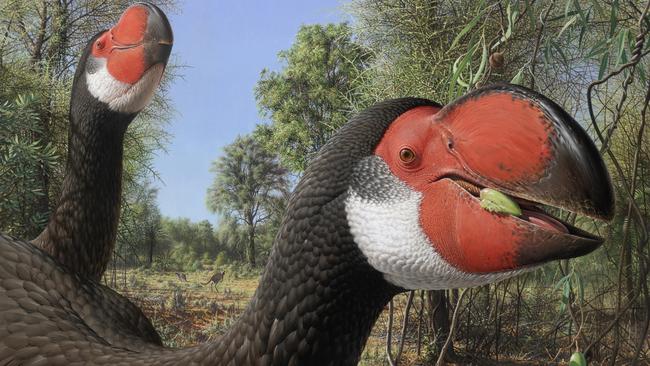Flinders University researchers use casts and scans to recreate brain of ancient Australian bird Dromornis stirtoni
Scientists scratching their heads looking at these extinct megafauna have finally cracked the secret to how they lived – with oddly shaped brains.
SA News
Don't miss out on the headlines from SA News. Followed categories will be added to My News.
Flinders University scientists have used modern imaging techniques to get inside the huge heads of ancient Australia’s biggest birds.
Dromornis stirtoni, also known as Stirton’s thunder bird, was up to 3m tall and weighed up to 600kg with a head about 50cm long.
But the big bird’s brain was constrained in a “weird” skull.
“The cranium had become taller and wider than it was long, and so the brain within was squeezed and flattened to fit,” said Associate Professor Trevor Worthy, a leading vertebrate palaeontologist.
The researchers used the skulls of fossil birds to make casts of the brains and then describe how those related to modern birds, such as ducks and chickens. They also used CT scans.
Lead author Dr Warren Handley said the research revealed new information about how the birds perceived the world around them.

“Together with their large, forward-facing eyes and very large bills, the shape of their brains and nerves suggested these birds likely had well-developed stereoscopic vision, or depth perception, and fed on a diet of soft leaves and fruit,” Dr Handley said.
The research paper Endocranial Anatomy of the Giant Extinct Australian Mihirung Birds (Aves, Dromornithidae) is published in the journal Diversity.




